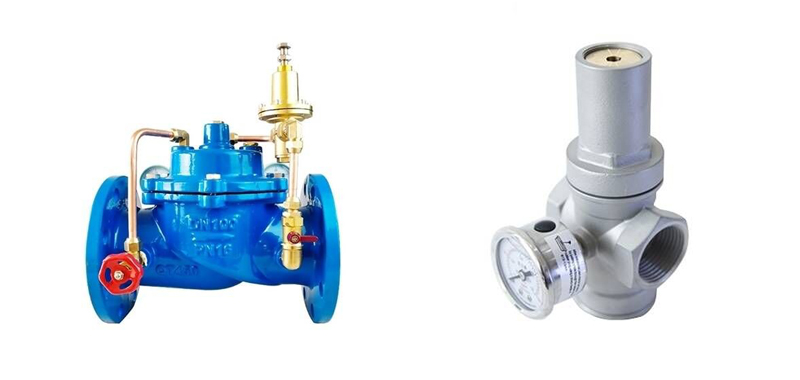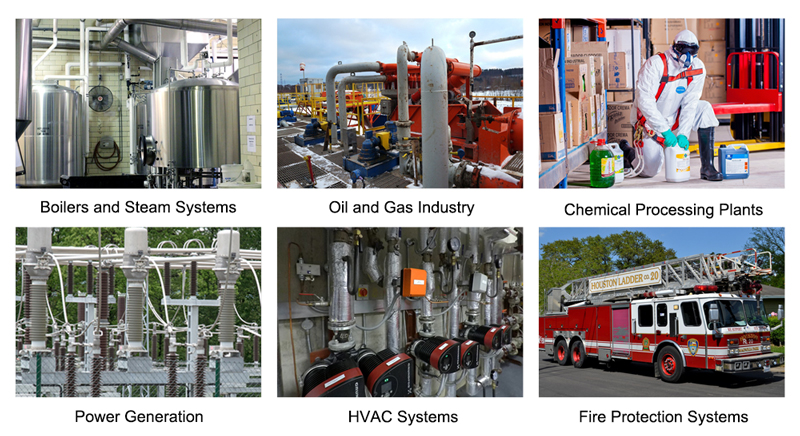What is a Pressure Relief Valve?
The pressure relief valve is a protective device that can protect the engine and turbine. When the pressure in the equipment or pipeline exceeds the pressure set by the pressure relief valve, it will automatically open the pressure relief to ensure that the equipment and pipelines The internal medium pressure is under the set pressure to protect its equipment and pipelines and prevent accidents. Therefore, it is a protection device that can automatically open and close according to the working pressure of the system. It is generally installed on equipment or pipelines in closed systems to protect the safety of the system.

Types of Pressure Relief Valve
Pressure relief valves are essential safety devices designed to protect equipment and systems from overpressure conditions by automatically releasing excess pressure. There are several types of pressure relief valves, each with its own design and operating principle. Here are some common types:
- Spring-Loaded Pressure Relief Valve: Spring-loaded pressure relief valves are the most commonly used type. They consist of a spring-loaded disk or piston that sits against a valve seat. When the pressure in the system exceeds the set pressure of the spring, it compresses, lifting the disk or piston off the seat and allowing the excess pressure to be released.
- Pilot-Operated Pressure Relief Valve: Pilot-operated pressure relief valves use a separate control system, called a pilot, to regulate the opening and closing of the main valve. The pilot senses the pressure upstream of the main valve and controls the movement of a piston or diaphragm to open or close the valve as needed.
- Direct-Acting Pressure Relief Valve: Direct-acting pressure relief valves operate without the need for external control mechanisms. They rely solely on the force exerted by the fluid pressure to open and close the valve. These valves are often used in low-pressure applications where precise control is not required.
- Balanced Bellows Pressure Relief Valve: Balanced bellows pressure relief valves use a bellows assembly to sense the pressure and control the opening of the valve. The bellows assembly is balanced against the system pressure, allowing for accurate and stable operation, particularly in applications with varying pressure conditions.
Advantages of Pressure Relief Valve
Pressure relief valves offer numerous advantages in ensuring the safety, reliability, and efficiency of equipment and systems subjected to varying pressure conditions. Here are some key advantages of pressure relief valves:
- Overpressure Protection: The primary function of pressure relief valves is to protect equipment and systems from overpressure conditions. By automatically releasing excess pressure, these valves prevent catastrophic failures, such as explosions or ruptures, which could result in significant damage, downtime, or injury.
- Equipment Protection: Pressure relief valves safeguard equipment, including vessels, pipelines, boilers, and storage tanks, from the damaging effects of overpressure. By relieving excess pressure, these valves prevent structural damage, deformation, or fatigue, extending the lifespan of equipment and reducing maintenance costs.
- Prevention of Process Disruptions: Overpressure events can lead to process disruptions, production downtime, and loss of revenue. Pressure relief valves help prevent such disruptions by maintaining pressure within safe operating limits, thereby ensuring uninterrupted operation and productivity.
- Protection Against Thermal Expansion: Pressure relief valves protect systems from the effects of thermal expansion, which can occur due to temperature fluctuations. By relieving excess pressure caused by thermal expansion, these valves prevent damage to equipment and maintain system integrity.
- Emergency Response: In the event of a sudden pressure surge or system malfunction, pressure relief valves provide an immediate response by automatically opening to release excess pressure. This rapid response helps mitigate the potential consequences of overpressure events, reducing the severity of accidents or incidents.
In summary, pressure relief valves play a crucial role in protecting equipment, processes, and personnel from the hazards of overpressure. Their ability to automatically release excess pressure, coupled with their flexibility, reliability, and compliance with regulations, makes them indispensable components in a wide range of industrial applications.
What are Pressure Relief Valves Used for?
Pressure relief valves are used in various industries and applications where the control and regulation of pressure are critical for the safe and efficient operation of equipment and systems. Some common uses of pressure relief valves include:
- Boilers and Steam Systems: Pressure relief valves are essential safety devices in boilers and steam systems to prevent overpressure conditions that could lead to explosions or ruptures. These valves release excess steam to maintain pressure within safe limits.
- Oil and Gas Industry: In the oil and gas industry, pressure relief valves are used in various applications, including wellheads, pipelines, refineries, and offshore platforms. These valves protect equipment and personnel from the hazards of overpressure, such as blowouts or fires.
- Chemical Processing Plants: Chemical processing plants utilize pressure relief valves to safeguard reactors, distillation columns, and other process equipment from overpressure situations. These valves help prevent chemical spills, equipment failures, and environmental contamination.
- Power Generation: Pressure relief valves are integral to power generation facilities, including nuclear, fossil fuel, and renewable energy plants. They protect turbines, boilers, condensers, and other components from overpressure conditions that could compromise safety and reliability.
- HVAC Systems: Heating, ventilation, and air conditioning (HVAC) systems incorporate pressure relief valves to maintain optimal pressure levels in boilers, water heaters, and refrigeration systems. These valves ensure safe and efficient operation while preventing damage to HVAC equipment.
- Fire Protection Systems: Pressure relief valves are incorporated into fire protection systems, including sprinkler systems and fire suppression systems, to control pressure and prevent damage to piping and components during emergency situations.

Pressure relief valves are indispensable components in systems where pressure control is paramount. By promptly releasing excess pressure, these valves mitigate the risk of equipment damage, environmental contamination, and personal injury. Understanding the function, types, and applications of pressure relief valves is essential for maintaining the safety, reliability, and efficiency of industrial processes and systems.

